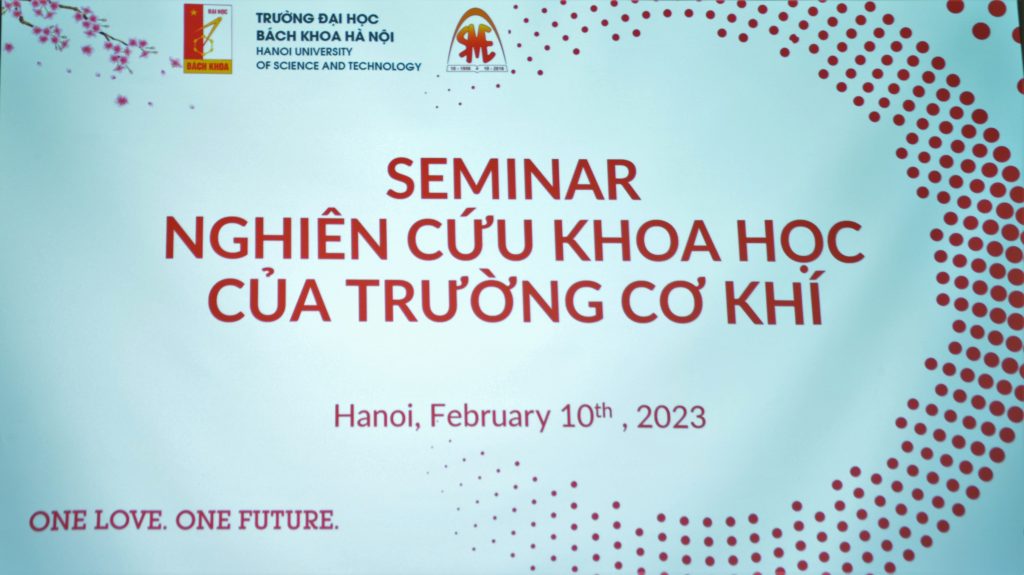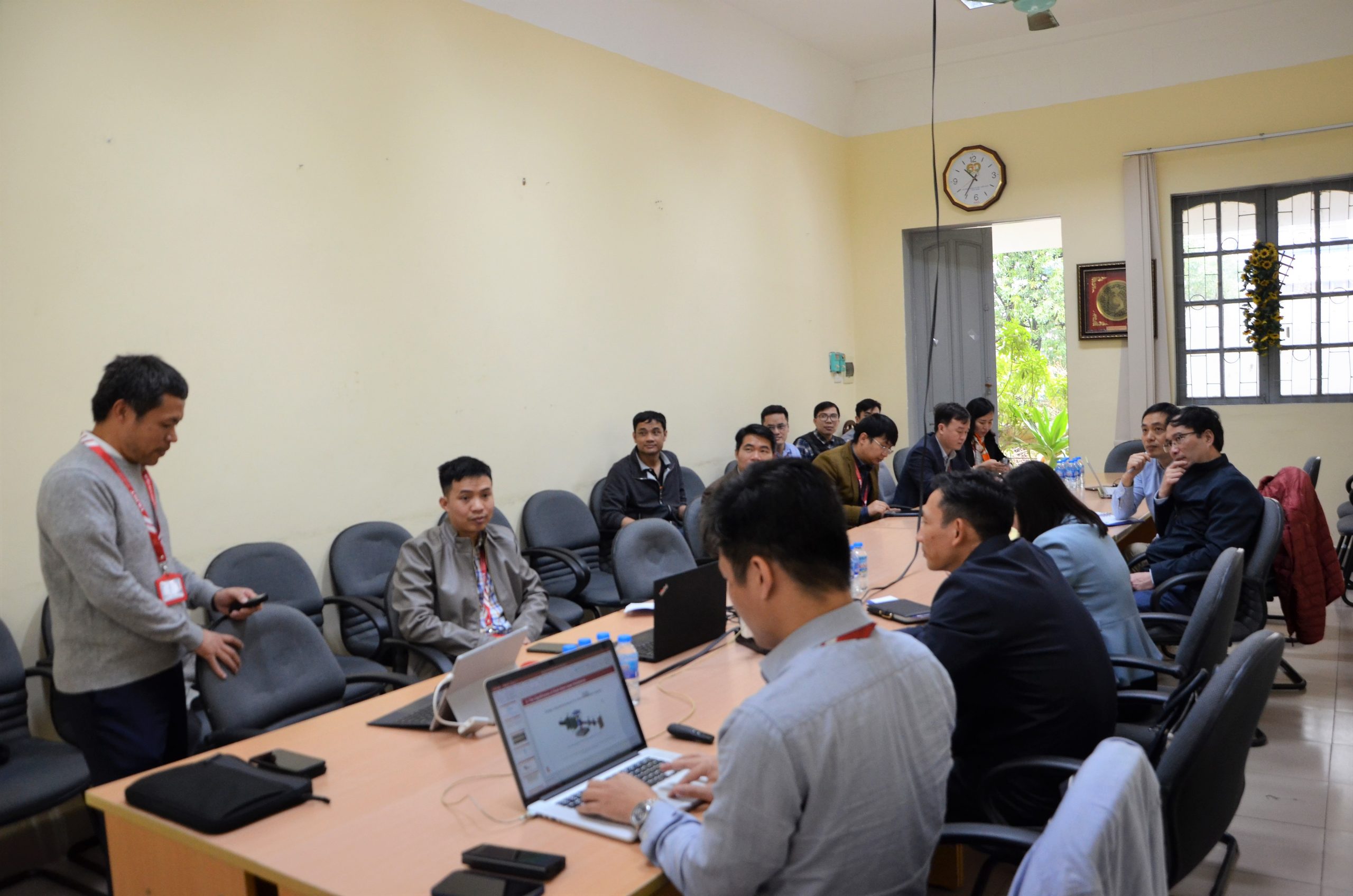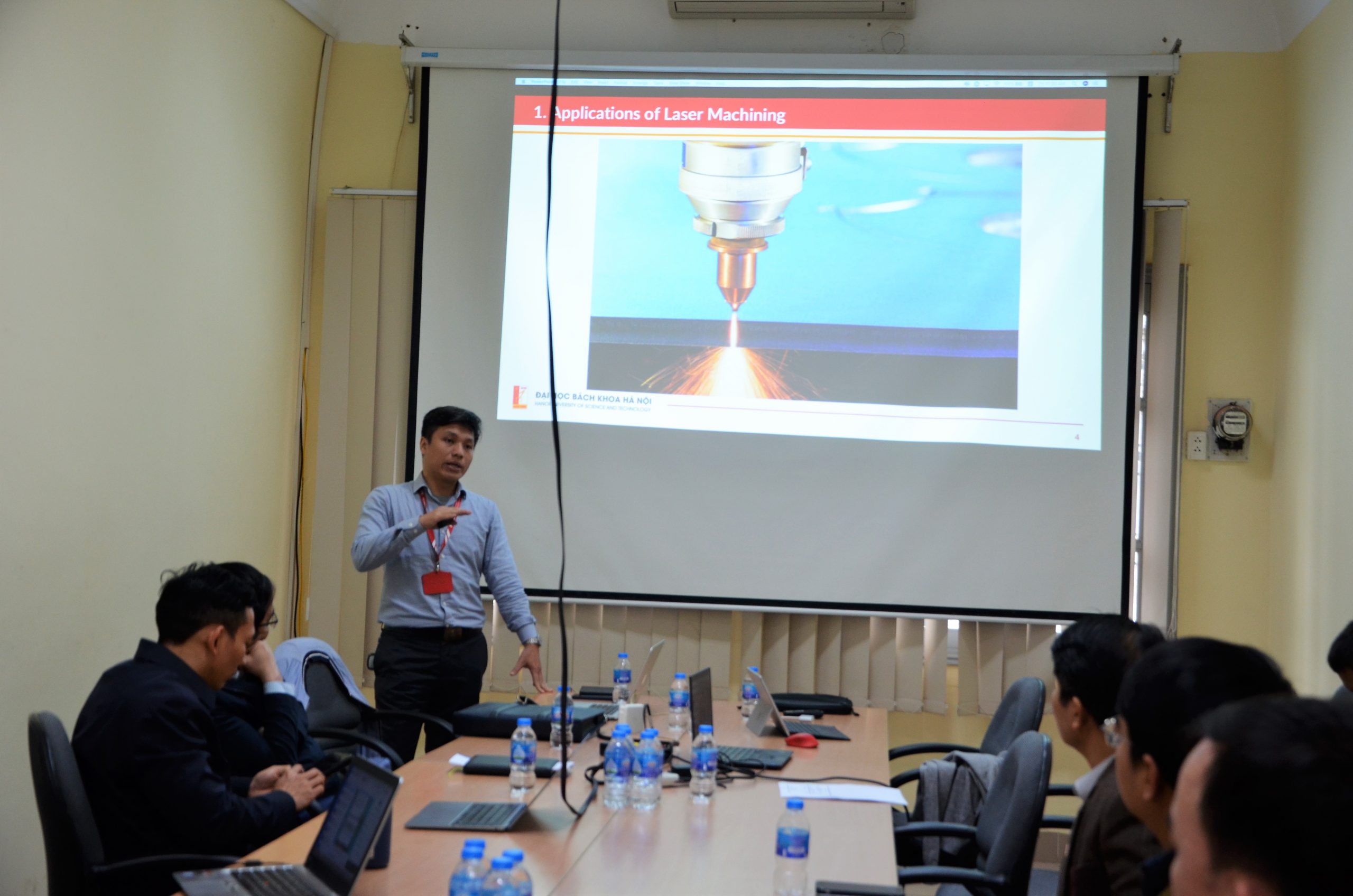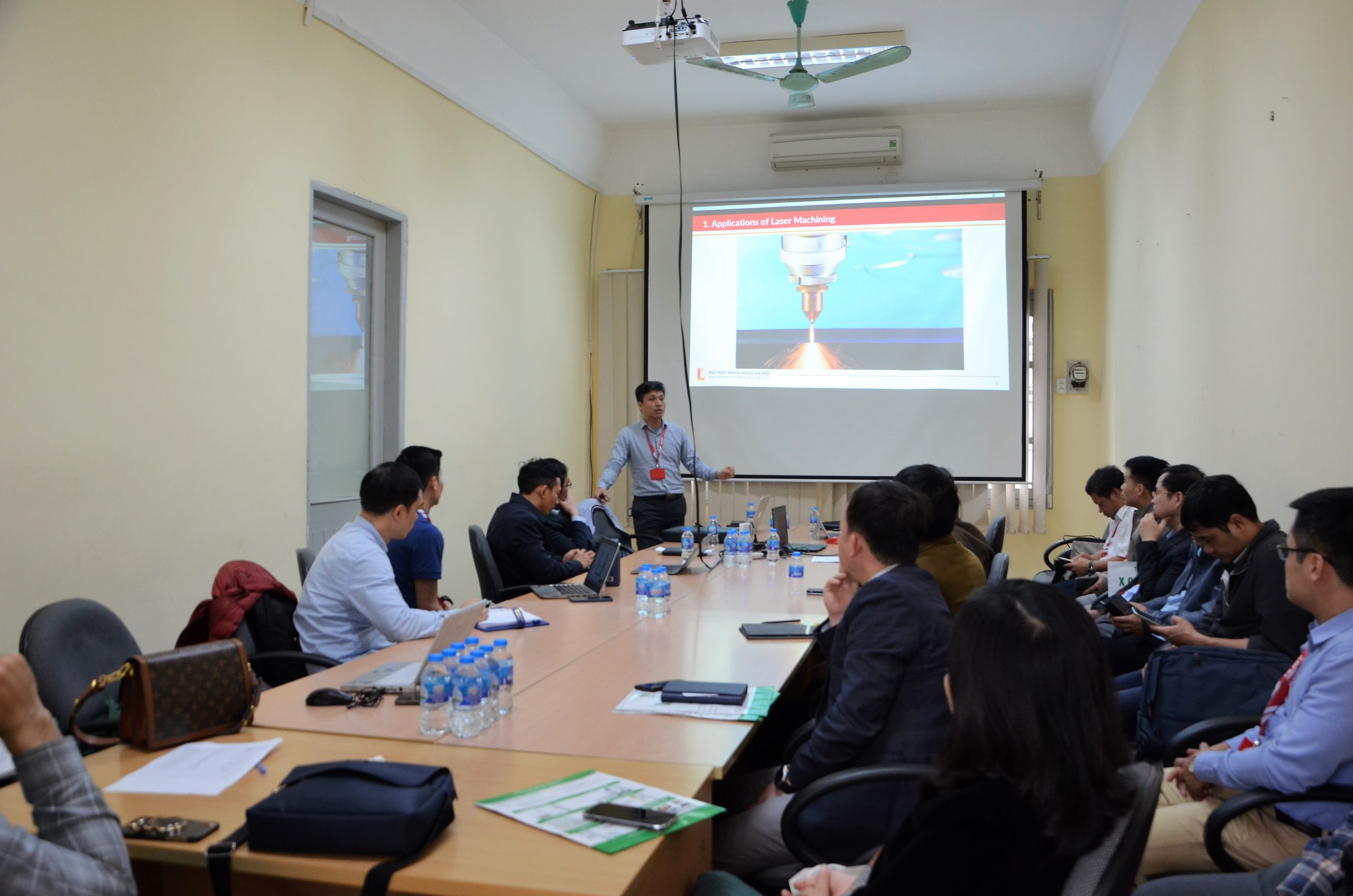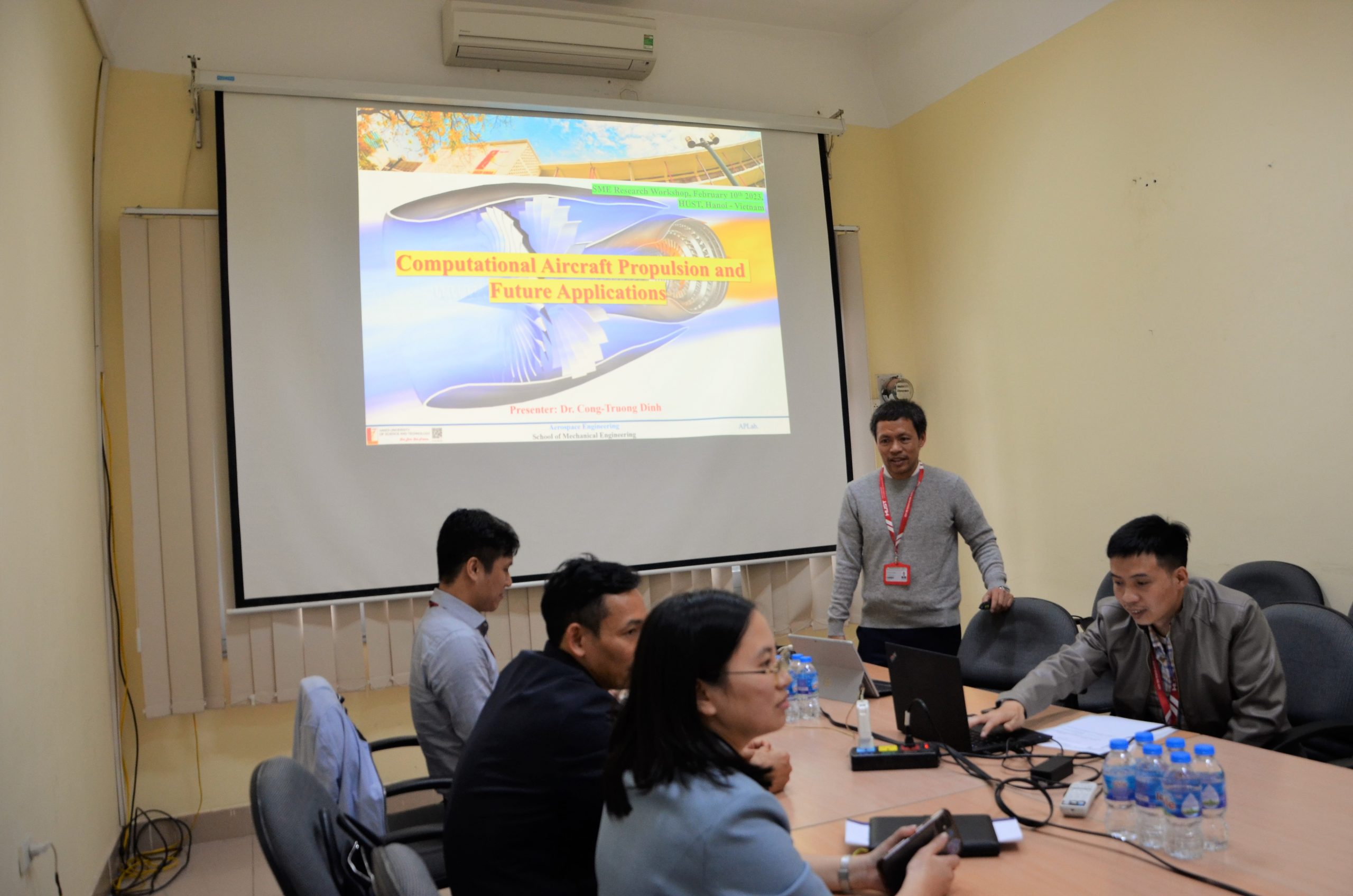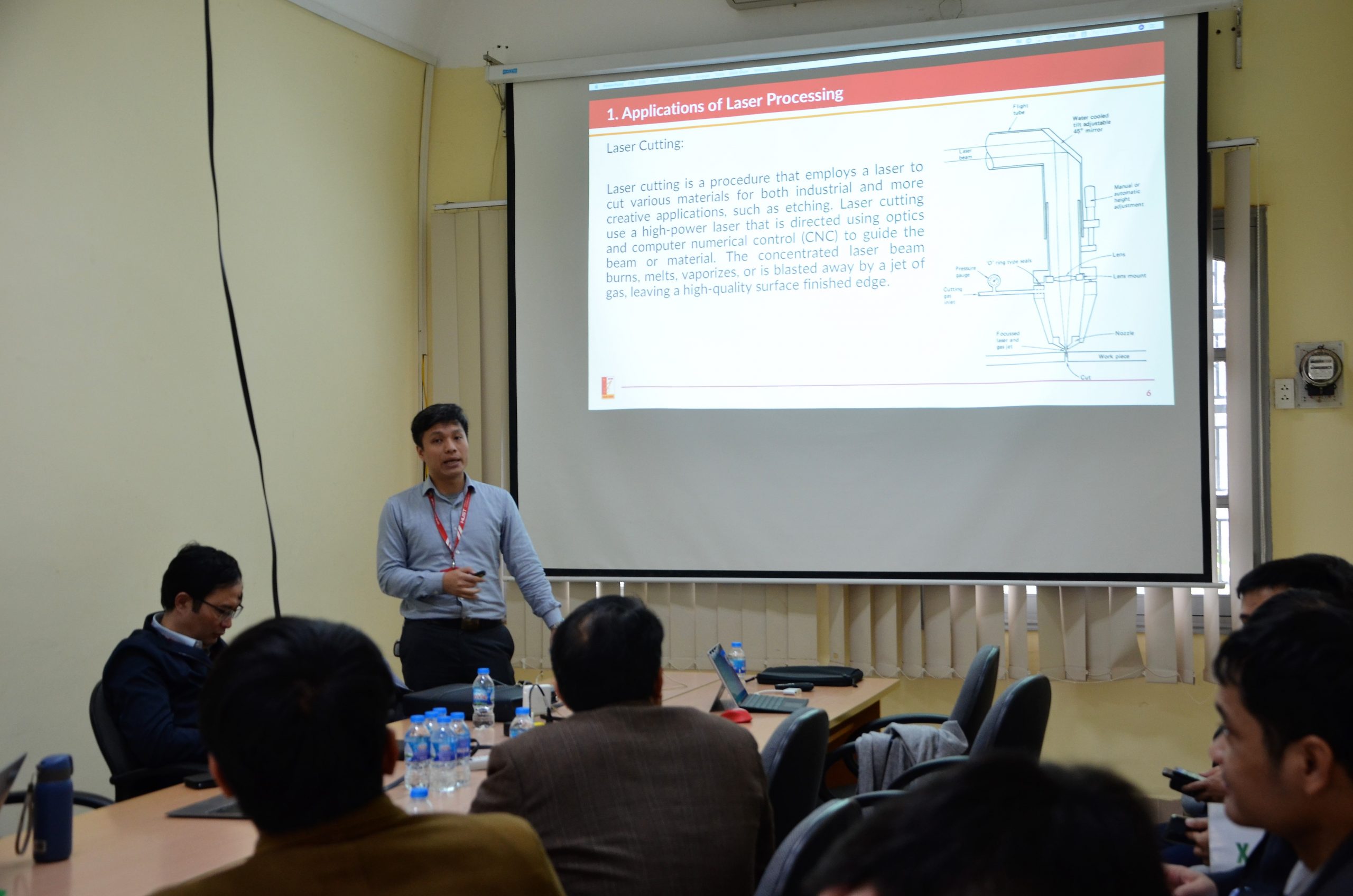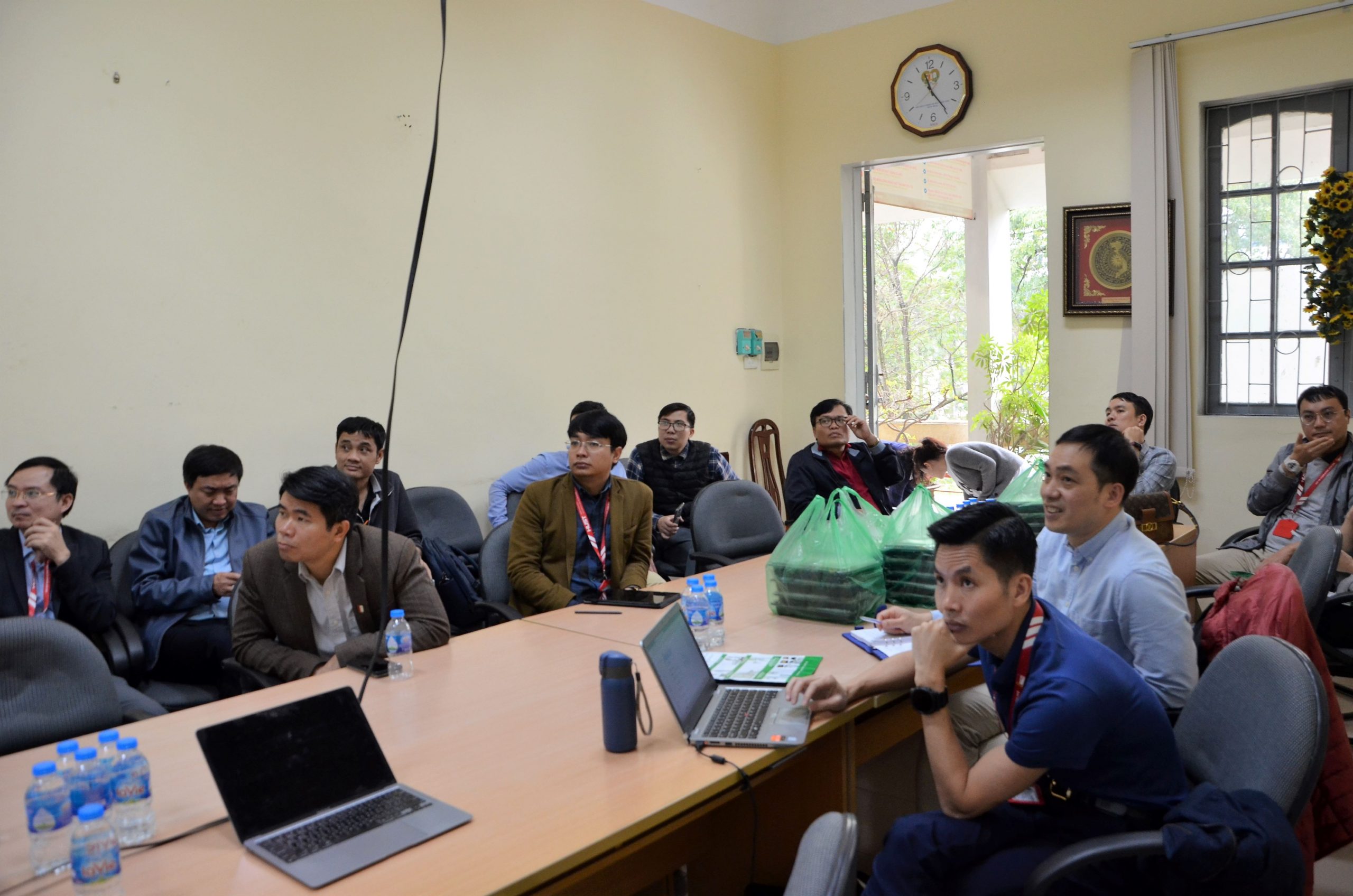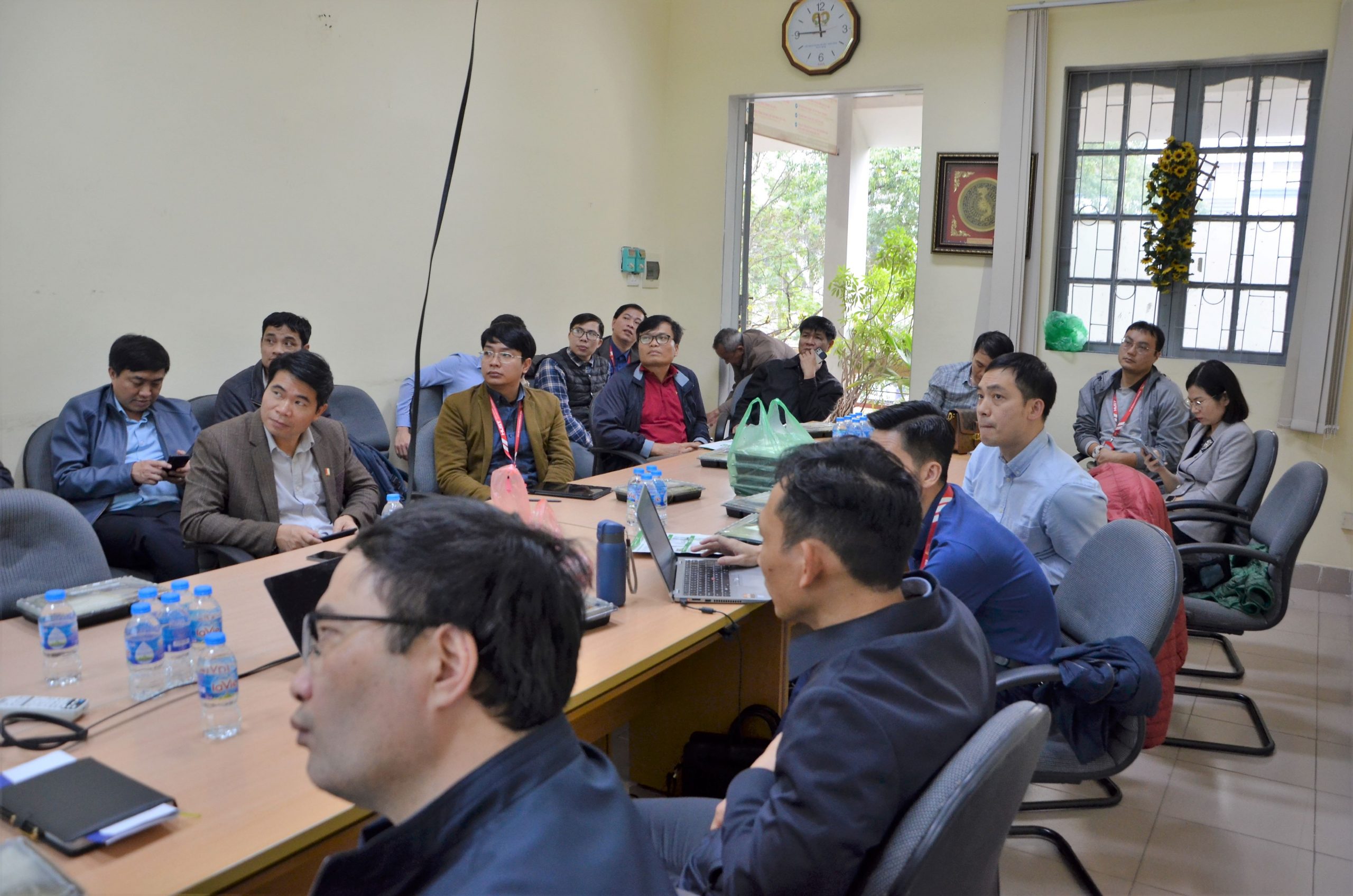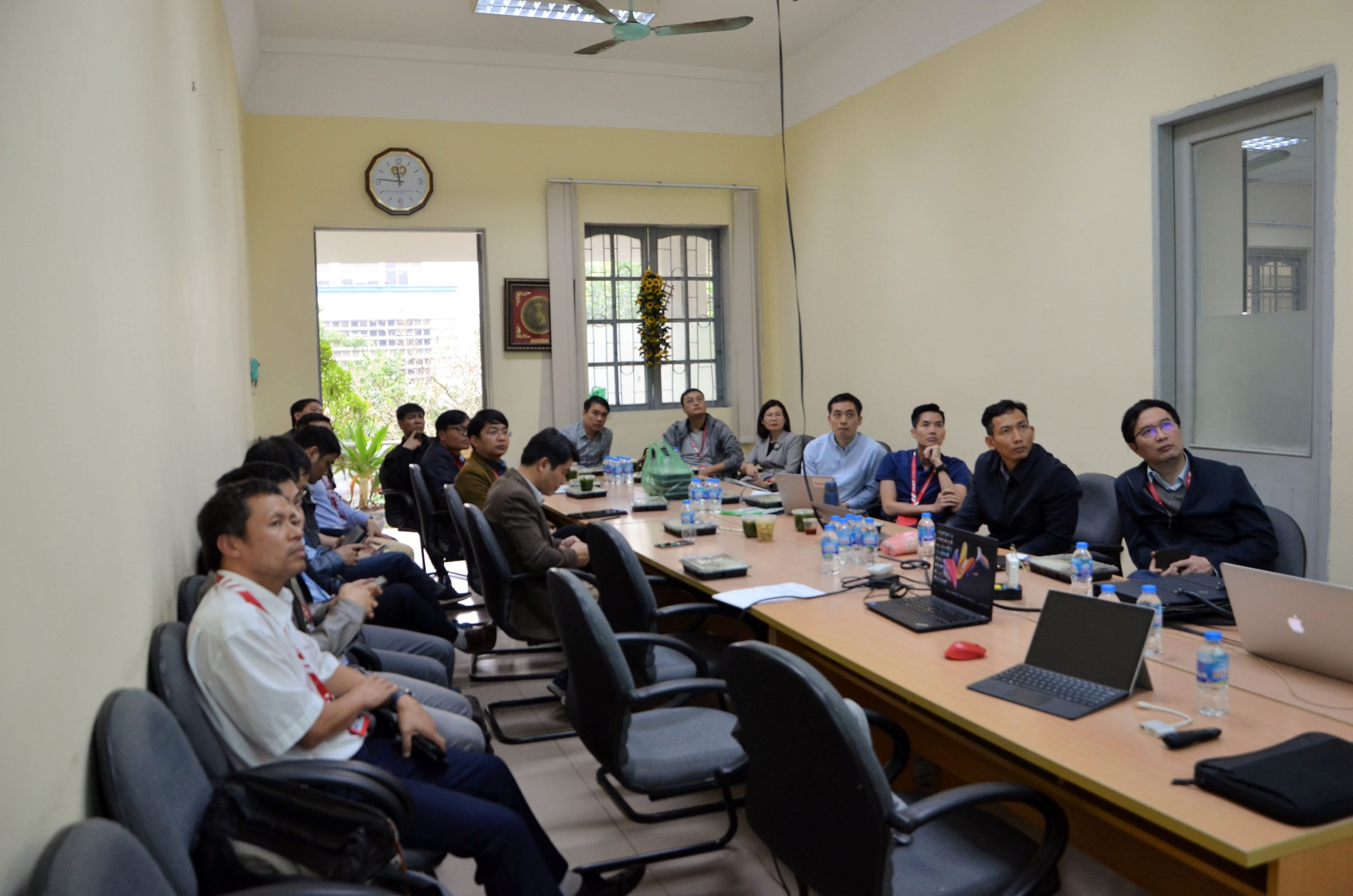Ngày 10/2/2023, trong không khí đầu năm mới Xuân Quý Mão, hội nghị nghiên cứu khoa học của trường Cơ khí đã diễn ra tại phòng C10 – 307, trong không khí thân mật và vui vẻ.
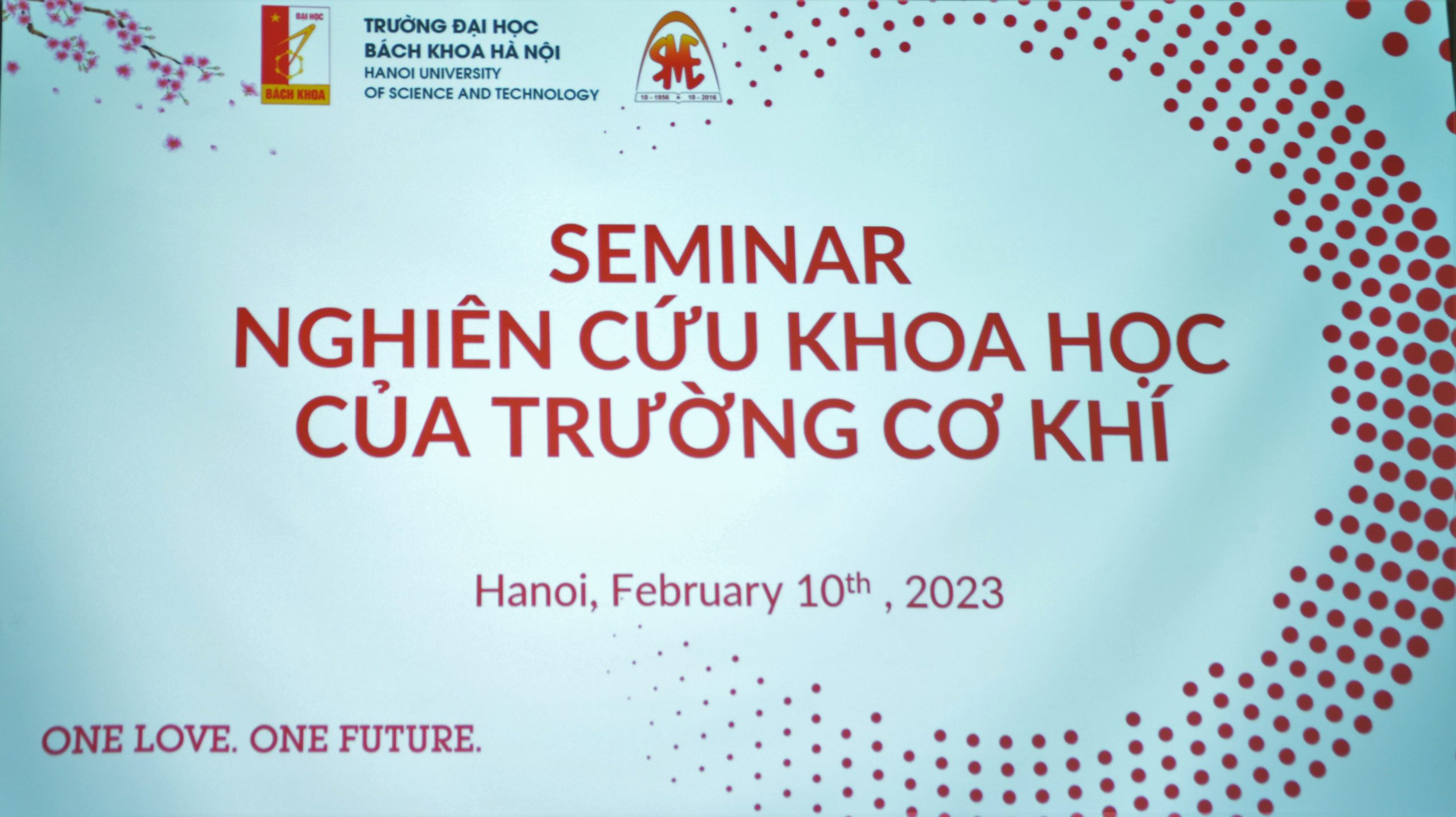
Mở đầu cho các hoạt động khoa học của trường Cơ khí năm Quý Mão 2023, đồng thời tạo một môi trường học thuật cho các thầy cô, các nghiên cứu sinh, nhà khoa học của Trường được trao đổi thông tin về các lĩnh vực nghiên cứu và giao lưu học tập. Hội nghị khoa học tháng 2 có sự tham dự của PGS. TS Trương Hoành Sơn – Hiệu trưởng trường Cơ khí, PGS. TS Phạm Văn Sáng – phó hiệu trưởng trường Cơ khí, PGS. Khổng Vũ Quảng – Trưởng Khoa Cơ khí Động lực, PGS. Vũ Toàn Thắng – Trưởng Khoa Cơ Điện tử, và các thầy cô, nghiên cứu sinh đang học tập và nghiên cứu tại trường Cơ khí, đại học Bách khoa Hà Nội.
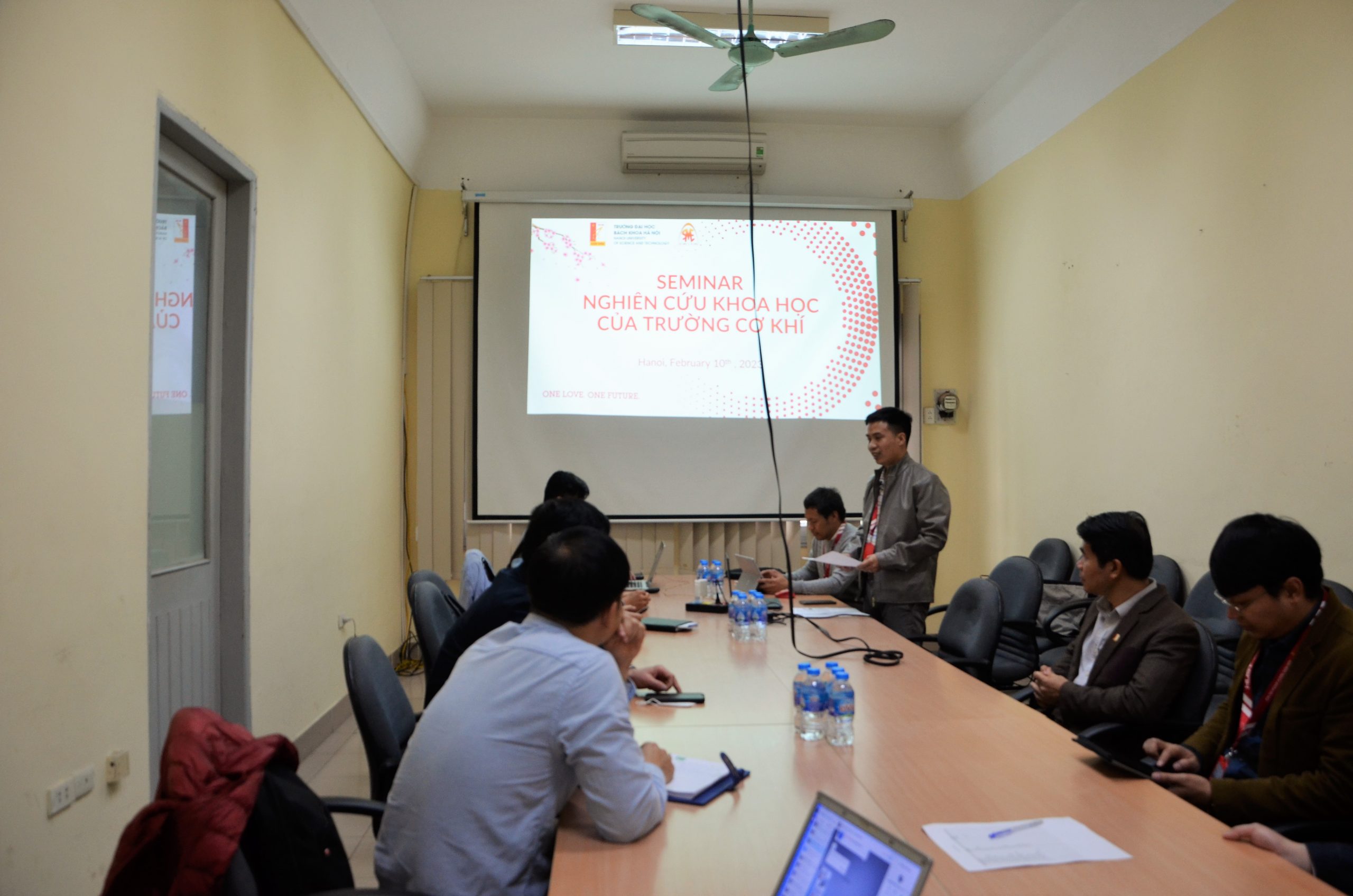
Hai báo cáo nghiên cứu của hai diễn giả: TS. Đinh Công Trường – NCM Kỹ Thuật Hàng không vũ trụ và TS. Cao Xuân Bình – NCM Cơ Điện tử thông minh đã được chia sẻ tại hội nghị.
Topic 1: Computational Aircraft Propulsion and Future Applications
Diễn giả: TS. Đinh Công Trường
| *Abstract: Gas turbines play a crucial role in the aviation industry as they are primary sources of power for most aircraft. Compressor, Combustor and Turbine are the three essential part of engines. The research is focused on numerical computation of multi-physics in aircraft engine using commercial software (SolidWord, Catia, ANSYS WorkBench, Numeca, CFTurbo, Concept Nrec,…) and Opensource (OpenFoam, DOFI,…) for blades optimization, tip leakage flow, swirler design and combustorparts optimization, and external and internal cooling systems optimizations for turbine blades. Through the numerical simulation of multiphysical phenomena, especially analyzing the phenomena of compressor tip leakage vortex, the new ideas are found to improve the compressor performance. The numerical simulation methods are evaluating the phenomena in the combustion chamber to optimize the combustor swirler and components design and augment the combustion chamber performance. The new ideas in external and internal cooling systems are investigated to improve the turbine blades performance and their life during the operation of aircraft engines. Through these studies, the ideas found will be applied to design and product the new engines for rescue and civil aircrafts using electric, hybrid, green and no-pollution energies in the near future. In addition, some ideas of propulsion engine will be also applied to the design and manufacture of small rockets. |
Topic 2: Application of Laser and The Importance of Automatic Real-Time Focus Control System for Use in Laser Micromachining
Diễn giả: TS. Cao Xuân Bình
| *Abstract: Recently, ultrafast laser processing has become increasingly significant in academic research and engineering. With the capability of fabricating nano-scale 3D patterns with high resolution, laser processing has an enormous number of applications in both science and industry, such as nano-optics, nano-photonics, plasmonics, nano electronics, and nano-magnetism. However, because of its superfast working, laser processing has a limitation concerning the focusing condition. A poor focusing condition can lead to the permanent destruction of the target sample, a reduction of resolution, a decrease in sensitivity of optic and electronic nano-devices, and low productivity. Precisely adjusting the target sample at the laser focal position, at which the highest optical energy and smallest beam spot size are acquired, is extremely significant. Therefore, a precise, flexible, and rapid focus detection system is in considerable demand for increasing the productivity as well as accuracy of laser processing. |
Một số hình ảnh tại hội nghị:

 English
English
![[SEMINAR NGHIÊN CỨU KHOA HỌC TRƯỜNG CƠ KHÍ] THÁNG 2/2023](https://sme.hust.edu.vn/wp-content/uploads/2019/05/a.jpg)
